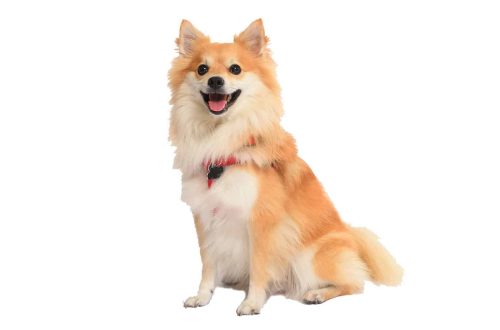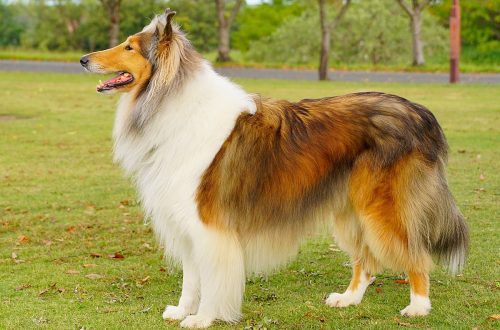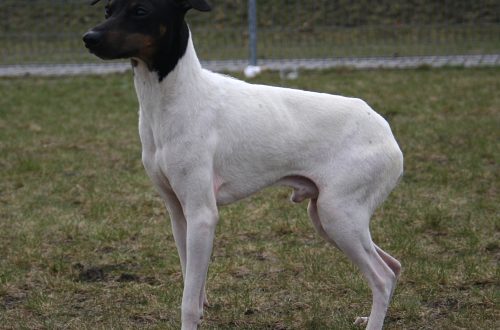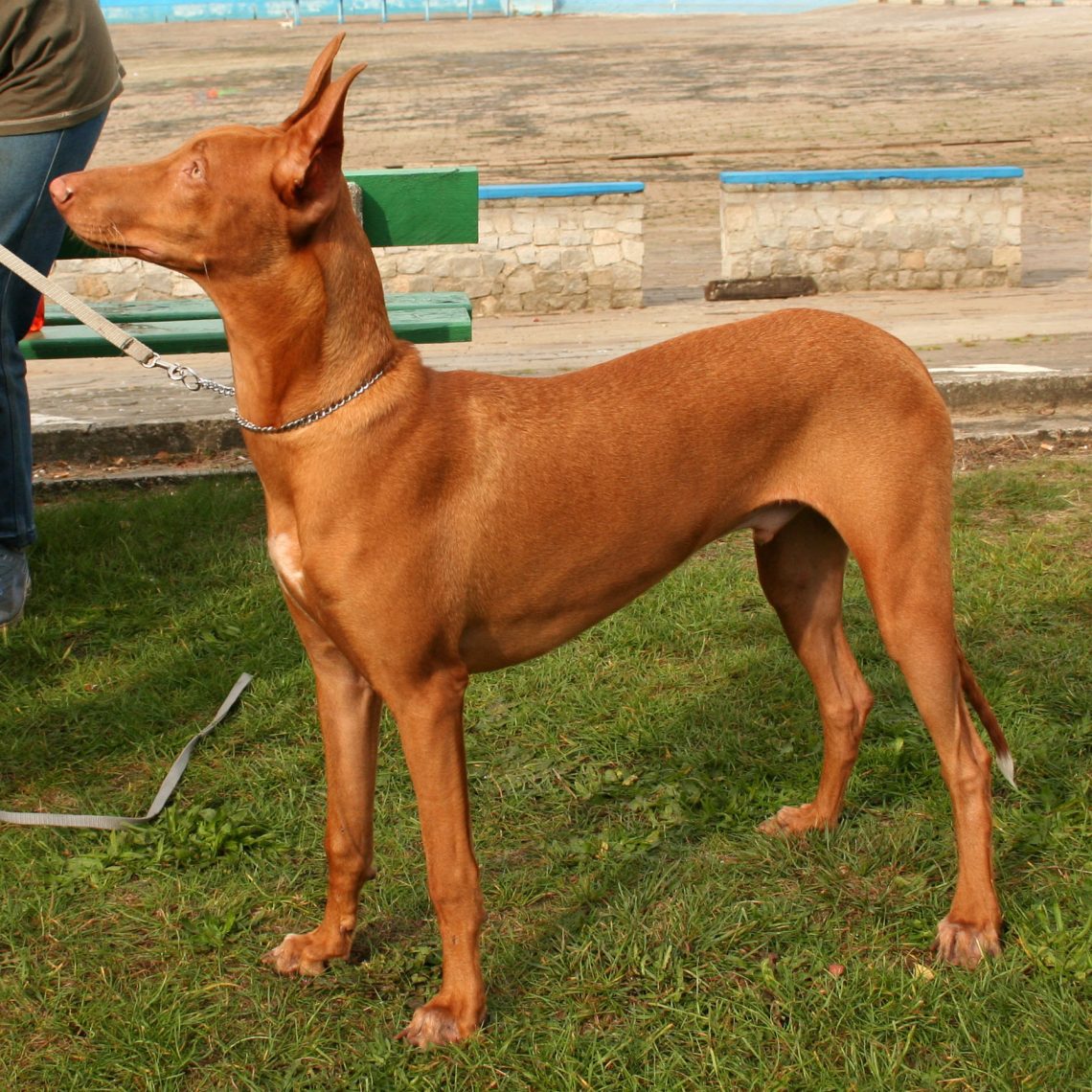
Pharaoh Hound
The Pharaoh Hound is a long-legged creature with golden chestnut hair and the profile of the Egyptian god Anubis, belonging to a group of primitive dogs. The official birthplace of the breed is the island of Malta.
Contents
Characteristics of Pharaoh Hound
| Country of origin | Malta |
| The size | Average |
| Growth | 53–67 cm |
| Weight | 20–25 kg |
| Age | up to 14 years old |
| FCI breed group | Spitz and breeds of primitive type |
Basic moments
- Since the “pharaoh” pursues prey on the hunt, relying on sight, he is often ranked among the group of greyhounds.
- Representatives of this family are in the top 10 most expensive dogs in the world.
- The nobility of the silhouette and the unsurpassed running qualities of the pharaoh dogs are due to many years of isolation and long-term non-interference of breeders in the gene pool of animals.
- In Malta, the breed was attracted mainly to hunt rabbits, thanks to which its representatives got a second name – the Maltese rabbit greyhounds.
- The breed matures for a long time in exterior terms. If most puppies overcome adolescence by 7 months, then the “pharaohs” take from a year to a year and a half to become full-fledged handsome men.
- To date, the Pharaoh Hound has been transformed into a fashion pet and is not tested for working qualities. Hunting activities for modern animals have been replaced by sports racing, frisbee and agility.
- The underlined grooming and aristocratic appearance of the “pharaoh” is by no means the result of the tireless care of the owner. The short coat of dogs does not need grooming and expensive cosmetic procedures.
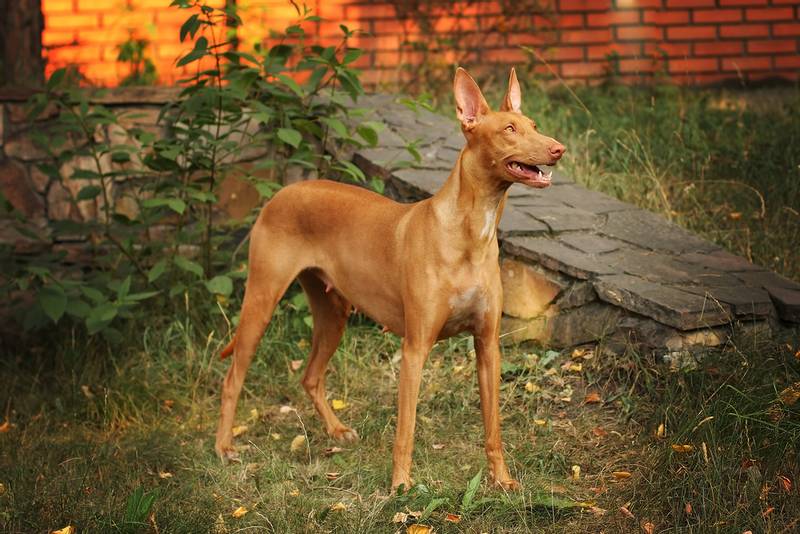
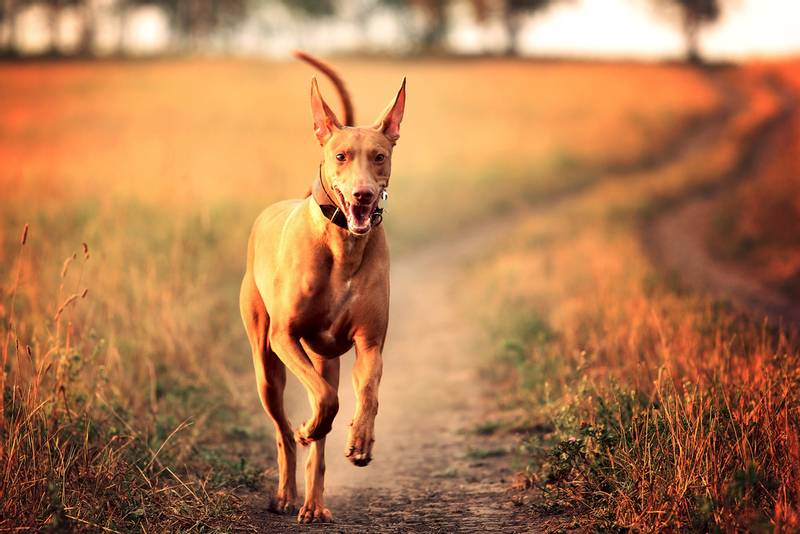
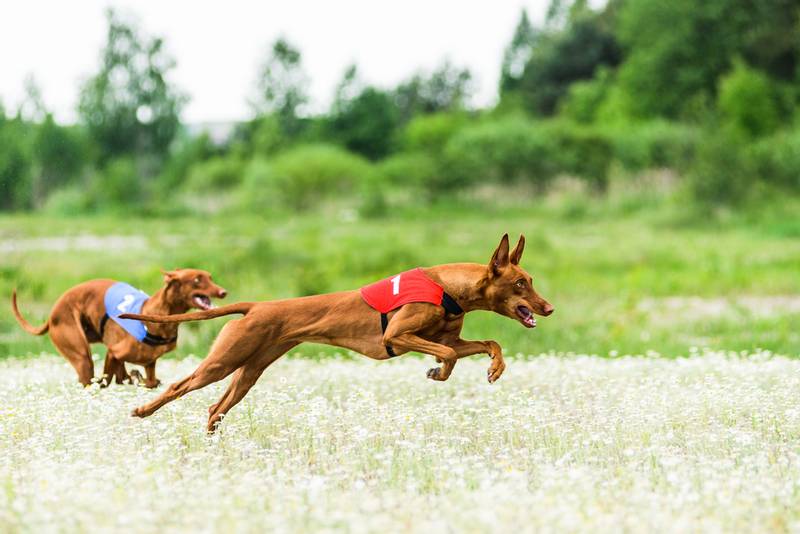
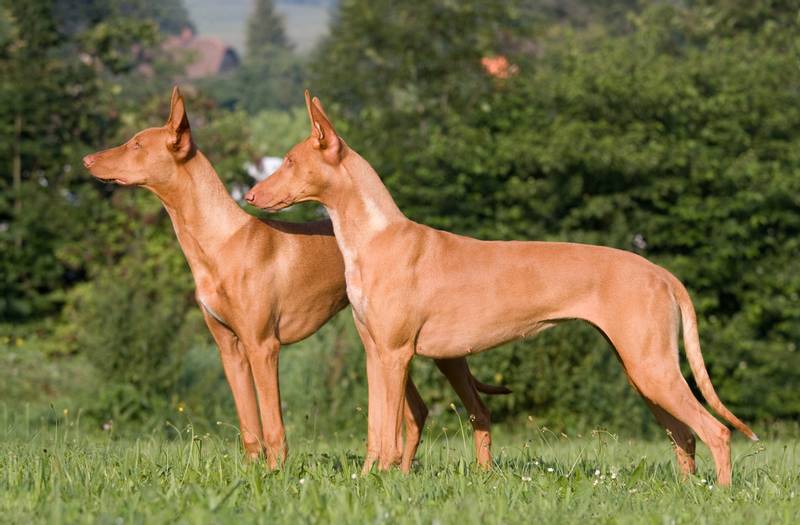
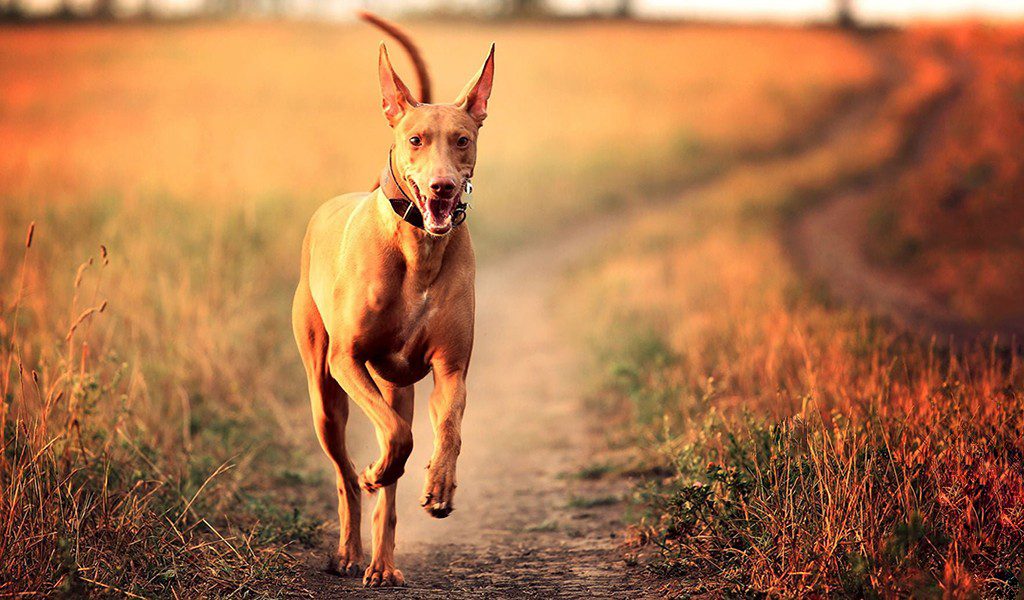
Pharaoh Hound is a lean sportswoman with a good-natured character and otherworldly charm of an amber look. Possessing aristocratic habits and a remarkable mind, this eared intellectual easily gets in touch and gains trust, while not condescending to frank subservience. Usually, a Maltese greyhound is recommended for those who are in dire need of a four-legged girlfriend who will gladly share the master’s love for dog racing, but at the same time will not destroy the house because she suddenly became bored and wanted to hunt. In addition, the breed is very accommodating, so it is safe to acquire a pharaoh dog even if representatives of the fauna of various sizes and weight categories already live at home.
Video: Pharaoh Hound
History of the Pharaoh Hound
Based on the exotic name of the breed, it is logical to assume that its ancestors were from the banks of the Nile. In fact, the outward resemblance of the representatives of this family with the hero of ancient Egyptian mythology Anubis is absolutely accidental. Moreover, the birthplace of dogs is Malta. According to legend, the Phoenicians brought the animals to these parts, where they lived in relative isolation for thousands of years without the possibility of interbreeding with other breeds. At the same time, on the island, the greyhounds were called “kelb tal-fenek”, which in translation meant “rabbit dog”.
Pharaoh dogs entered the countries of Europe at the beginning of the 20th century, and by the 1930s, English breeders received the first individuals. It took nearly thirty years for the animals to gain the trust of Old World dog breeders. Moreover, the British General Blok and his wife Pauline especially contributed to the awakening of interest in the “pharaohs”. The couple professionally bred rabbit greyhounds and founded their own kennel, from which 90% of the British population of “Anubis dogs” subsequently came out.
In 1977, the FCI breeding specialists became interested in the breed and even decided to bring its representatives to a single standard. True, it soon became clear that the name “Pharaoh Hound” in the stud books was occupied by another four-legged family that originated from the island of Ibiza. So that in the future there would be no interbreed confusion, the dogs from Malta were nevertheless assigned the “Pharaonic status”, and the dogs from Ibiza were urgently renamed Ibizan greyhounds.
Pharaoh hound breed standard
The physique of the “pharaohs” subtly looks like a Podenco Ibizanko (the same Ibizan greyhounds), which has given rise to a number of misconceptions about both breeds. In reality, the dogs from Malta are not relatives of the dogs from Ibiza, although the former and the latter are usually classified as greyhounds. As for appearance, in this regard, pharaoh dogs have all the trump cards. An elegantly taut silhouette with clearly traced muscles, a graceful elongated head, giving the animal a resemblance to an Egyptian guardian of the underworld, and a fiery iridescent coat color – all together this creates a unique image of a semi-mythical creature that survived the rise and fall of ancient empires.
Sexual dimorphism in the breed is quite pronounced. So, for example, the correct, from the point of view of experts, the male of the Maltese “Pharaoh” should be no lower than 53 cm and no higher than 63.5 cm. For a female, the growth limit is 53-61 cm. Separately, it is worth mentioning the running qualities of animals. Pharaoh dogs move in a rapid career, and in order to gain top speed, they do not need acceleration. In addition, the breed is distinguished by phenomenal maneuverability, which for thousands of years has helped its representatives to successfully hunt small game.
Head
The skull of the pharaoh dog has a characteristic elongated shape with a moderately pronounced transition from head to muzzle.
Jaws and teeth
“Pharaohs” are distinguished by strong teeth and developed jaws, which, when closed, demonstrate a standard scissor bite.
Nose
The skin on the nose is colored in a pinkish-flesh color, in harmony with the greyhound’s coat.
Eyes
A real pharaoh dog should have oval, deep-set eyes with a brilliant amber colored iris.
Pharaoh Hound Ears
The large, moderately high-set ears of the animal are part of the breed’s “recognizability”. In an alert state, the ear cloth takes a vertical position, giving the dog an even greater resemblance to the Egyptian god Anubis.
Neck
The slightly arched, graceful necks of the Pharaoh Hounds are of good length and muscularity.
Frame
The pharaoh hound has an elongated, flexible body with a straight top line, a slightly sloping croup, a deep chest and a harmoniously tucked up belly.
Pharaoh Hound limbs
The legs are straight and parallel to each other. The shoulders are long, strongly laid back, the elbows touch the body. The angles of the hocks are moderate, while the thighs are well developed. The paws of pharaoh dogs are characterized by a flattened shape, tightly pressed fingers and large elastic pads. The animal moves smoothly, with a proudly raised head, without excessive raising of the legs in height and ejection of the paws to the sides.
Tail
The tail of the breed has a whip-like shape and is set not too high, but at the same time not low. In motion, it rises and bends upwards. Undesirable transformations: curled tail or sandwiched between the hind legs.
Wool
The coat of pharaoh dogs has a thin, but harsh structure. The hair itself is very short, shiny, of sufficient density. The presence of any feathers is excluded.
Pharaoh Hound Color
The Pharaoh Hound can range in color from wheaten-gold to chestnut-red with small white spots. Desirable white markings on the tip of the tail, fingers, chest (star). A miniature white blaze on the muzzle is allowed as standard, in contrast to speckling and white markings on the rest of the body.
Disqualifying vices
Any defects in appearance and behavior of a strong degree of severity lead to a mandatory disqualification of the animal in the competition. In addition to standard vices such as cowardice, aggression and anatomical developmental anomalies, specific breed “irregularities” can also be found in pharaoh dogs. In particular, individuals with a large white spot on the nape are not allowed to participate in exhibitions. Another important point: when taking your dog to the show ring, be prepared for incompetent refereeing. Such incidents occur from time to time, usually due to the fact that there are very few genuine experts who thoroughly understand the intricacies of the exterior of the “pharaohs”.
The nature of the pharaoh dog
Despite the somewhat pretentious name of the breed, its representatives are completely devoid of arrogance and the desire to suppress everyone and everything. The correct Pharaoh Hound is an affectionate, intelligent and understanding creature, with whom it is easy to establish relationships, even without cynological experience behind him. One of the main features of the Maltese rabbit greyhounds is their phenomenal peacefulness. Hyperactive children with their constant running around, narcissistic cats walking around the apartment, crowds of guests – the “pharaoh” perceives such vicissitudes of fate with incredible calmness.
Nevertheless, it is clearly not worth considering a pet as a timid and insecure creature. If necessary, this graceful “model” will bark at a stranger, and rein in the unbridled crows on the street, and protect its own good from children’s encroachments. Sociability and curiosity are qualities that every representative of the breed must possess. At the same time, obsession is absolutely alien to pharaoh dogs. After making sure that the owner does not seek to make contact, the “pharaoh” will not humiliate himself and beg for affection, but will take a break and go about his business.
The innate aristocracy of behavior is what distinguishes the Maltese greyhounds. A real pharaoh dog builds behavior depending on the environment and does not allow himself too much. For example, developing insane speeds on dog races and chasing a mechanical hare with primitive passion, the “pharaoh” will never turn the apartment in which he lives upside down. Moreover, at home, this fit runner will prefer to play the role of a sofa minion and take a quiet nap in an armchair while the owner prepares another portion of goodies for him.
As for living together with other dogs, as well as with their own relatives, here the “Maltese” are surprisingly loyal – their innate conflictlessness affects. By the way, don’t expect the Pharaoh Hound to be devoted to just one person. Representatives of this breed are distinguished by an even attitude towards all family members, and if someone is singled out, they do it very delicately. Not characteristic of the graceful “Anubis” and such a bad habit as empty nonsense. Usually owners complain about the excessive passion of the breed for barking and howling, who do not like to walk their four-legged wards, and also have the habit of locking the animal in an empty apartment.
Education and training
It’s easy to be friends with a Pharaoh Hound, but it’s impossible to instill the necessary etiquette in your pet right away, no matter how great friends you are. On the other hand, rabbit greyhounds have a phenomenal memory, and once learned commands or artistic numbers, they never forget.
It is important to understand that proud “anubis” cannot stand strict discipline and study, therefore, if you intend to engage in training, get ready to spend several months to several years on this matter. The same OKD breed will comprehend many times longer than any German Shepherd, so sometimes it is wiser to abandon complex programs in favor of more simplified options. After all, pharaoh dogs were not bred to serve and guard.
To control a pet in the city or hunting conditions, a set of elementary commands like “Come!”, “Place!”, “Stop!” and others. If the animal belongs to the number of show individuals that are regularly exhibited in the ring, it is worth adding several specific commands to this set that help to present the dog in front of the commission in a favorable light: “Work!”, “Teeth!”, “Run!”.
The style of teaching all skills should be extremely gentle – do not be afraid, the “pharaoh” will not interpret kindness as weakness and will not turn on the alpha male. But it’s better not to get carried away with repetitions of exercises – the breed will not endure such tediousness and next time will try to sneak out of the lesson. An important nuance: the “pharaoh” must be weaned from an early age to give a voice over trifles. Despite the fact that the “Maltese” is not hysterical, their barking is loud and annoying, so the less often the dog strains the vocal cords at home, the more convenient it is for you.
Animals learn to properly satisfy their toilet needs quickly: pharaoh dogs are naturally very neat, therefore, in childhood, they relieve themselves on newspapers and diapers without any problems, and when they grow up, they do the same, but outside the apartment, while walking.
Pharaoh Hound Maintenance and care
Pharaoh dogs are undemanding to space if they lead an active sports life outside the home. Modern breeders claim that keeping an Anubis in an apartment is no more difficult than in a country mansion, if you set the correct daily routine for the animal. Keep in mind that the breed is sensitive to low temperatures (immigrants from hot Malta, after all), so on frosty days take the dog for a walk in insulated overalls or make him spend time actively: run a race, play with objects, jump. In general, do everything that helps to keep warm.
Pay due attention to the choice of collar. Due to the elongated neck, not all models are suitable for pharaoh dogs, but only the so-called “herring” – a design that has a wide center and narrowed edges. And please, no harnesses and chains, if you don’t want to strangle a pet rushing after a stray cat. But you don’t have to look for a suitable sunbed at all – at home, rabbit greyhounds still prefer to wallow on chairs and sofas, stubbornly ignoring the mattresses bought for them.
Hygiene
In terms of accuracy, pharaoh dogs have no equal. Representatives of this clan always find an opportunity to bypass a dirty puddle and even in the most inclement weather manage to return from a walk in a tidy condition. Moreover, the Pharaoh Hound is one of those rare image breeds, whose representatives do not need to be combed, trimmed and cut. The maximum that is required to maintain the coat in a healthy, presentable form is to walk over it once a week with a rubber mitten.
It makes no sense to wash the “Pharaohs” too often, but if the animal gets dirty (which is rather nonsense for the breed), you can’t do without taking a bath. The main thing is to carefully monitor that the pet does not have the opportunity to lick the shampoo, which will negatively affect his digestion. By the way, the “Maltese” themselves have a positive attitude towards water and willingly swim under the supervision of the owner. The eyes of representatives of the breed do not require special care either: it is enough to remove dust lumps in the morning and carry out preventive weekly rubbing of the eyelid mucosa with an ophthalmic solution.
The ears of pharaoh dogs are large and open, so they are well ventilated and do not cause problems for the owners. Of course, it is necessary to inspect the inside of the organ, but usually caring for the ears of a greyhound comes down to removing sulfur from them with a cotton swab or a wet bandage wrapped around tweezers. By the way, because of the too steep bend of the ear canal, it is undesirable for the “pharaohs” to instill liquid preparations and herbal lotions inside, since the animal will not be able to get rid of the liquid on its own. Alternatively, you can use the drops in tandem with a special veterinary powder. After the liquid has entered the ear and dissolved sulfur deposits, it is necessary to dry the inside of the organ by pouring a small amount of powder. The powder will absorb excess moisture, and the greyhound will be able to independently remove it from the ear canal by shaking his head.
Once a month, the pharaoh dog is recommended to shorten the claw plate so that it does not interfere with the run, and twice a week – brush his teeth with veterinary paste and a soft-bristled brush or a bandage wrapped around his finger. If you live in the city and in the cold season you walk with your pet along sidewalks covered with reagents, take care of the paws of the Maltese rabbit greyhound. In particular, upon returning home, wash them with warm water and lubricate with a nourishing cream.
Walking and coursing
Ideally, the “pharaoh” should spend about three hours a day outside the home walls. All this time he has the right to give free rein to his instincts – how to run, jump and play enough. In case of time pressure, the duration of walking can be reduced to two hours a day, but you will have to go outside with a greyhound in the morning and evening. The best alternative to hunting, which few people already practice with the Maltese “Anubis”, will be coursing. Running after a mechanical hare can both exhaust the animal and reveal its innate talents as a getter.
To arouse interest in the pursuit of mechanical bait, the puppy is teased at an early age with game tied to a rope. As for the full preparation for coursing competitions, it is recommended to start it from the age of 7 months. By this time, the Pharaoh Hound puppy is relatively strong and has built up the necessary muscle mass. The easiest way to teach proper running is with a bicycle: the owner controls the bike, and the four-legged ward fastened to the frame runs nearby. The pace of the ride should constantly alternate from slow to fast. At the same time, it is important to stop in time – the dog should come from training slightly tired, and not fall from exhaustion.
A good alternative to cycling is chasing snowdrifts, sand dunes and beaches. For such training, it is better to take the animal out of the settlements, since greyhounds consider traveling by car as a pleasant entertainment. Keep in mind that beginner pets are not allowed on adult tracks right away. At first, young athletes are engaged in coursing at short distances, since at the dawn of their sports career pharaoh dogs should run no more than 100-200 m. In addition, in order to avoid excessive loads, the immature pasterns of young individuals who are just starting to comprehend the basics of coursing are bandaged.
Feeding
The breed is modest in eating habits. In addition, its representatives have sensitive liver and pancreas, which automatically excludes the use of fatty foods. Accordingly, if you prefer to feed your pet with natural food, rely on lean meat, tripe and offal. By the way, the widespread myth that pharaoh dogs respect plant food more than animal food remains a myth. Of course, “vegetarian” products should be included in the diet, but the basis of the greyhound menu, like any dog, is meat and its waste.
An important point: the portion size of the pharaoh hound is a variable value. The largest plate should be for individuals participating in coursing and other sporting events. The smallest is among the elderly and the “Maltese” who lead a passive lifestyle.
So that the dog’s food does not fly into astronomical amounts, it is more expedient to mix meat into cereals, for example, buckwheat or rice. In summer, it is useful to feed the animal with fruit and vegetable salads in butter or low-fat sour cream. In winter, the lack of vitamins and fiber will have to be replenished with veterinary complexes, as well as dried algae (kelp, fucus). Fat-free cottage cheese, a chicken egg (no more than once a week), boiled fish fillet are the products necessary for a good nutrition of a greyhound.
Many foreign and domestic breeders of pharaoh dogs have opted for industrial feed. At the same time, it is important to understand that there will be no special savings when switching from “natural” to high-quality “drying”. In order for the animal to feel normal and to please with energy in the future, you will have to invest in super premium and holistic varieties with a high content of animal proteins. It is desirable that the composition of the “drying” includes meat, and not the by-products of its processing. For example, some manufacturers process leather, feathers and connective tissue to help increase the amount of protein in dry food. However, such a protein will not be absorbed by the body of the “pharaohs”, which means it will not bring benefits.
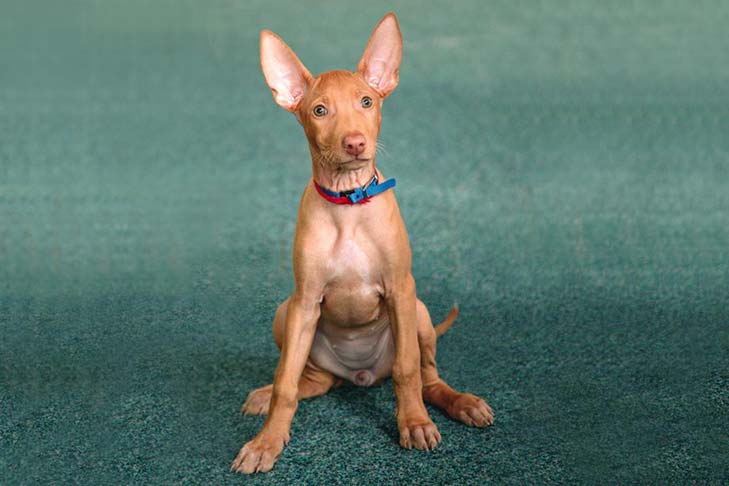
Health and disease of pharaoh dogs
Pharaoh dogs can be considered long-lived: 15-17 years for the breed is quite an achievable age limit. Moreover, even elderly and experienced individuals are in no hurry to go into circulation, maintaining a presentable appearance, participating in various exhibitions and acquiring diplomas.
Of the hereditary diseases in pharaoh dogs, hip dysplasia and luxation of the patella usually make themselves felt. Pets often suffer from bloating. In this regard, it is important not to overfeed the dog, providing an extremely calm environment in the room where he eats, because in a hurry and worrying, the greyhound swallows air with food, which provokes bloating.
But the breed does not suffer from allergies at all and can freely absorb all the products allowed for dogs. The only thing that spoils the life of the “Maltese” a little is hypersensitivity to chemicals, therefore, when treating the four-legged “Anubis” with flea and tick remedies, apply the drug to the most inaccessible places for the dog’s tongue.
How to choose a puppy
- Ask the seller how often he knits his bitch. For real pros who are interested in the development of the breed, pharaoh dogs bring offspring no more than once a year.
- An indicator of the normal condition of the little “pharaoh” is the folds on the body. If there are none, and the baby’s ribs are clearly visible, most likely the animals are underfed.
- In serious nurseries, all producers are tested for dysplasia. If, when meeting with the litter, the results of veterinary examinations are not presented, it is better not to risk it and choose another breeder.
- Pharaoh Hound puppies that are less than 2.5 months old have a bluish tint to the iris. With age, the eyes will change color to a standard amber.
- If you are buying a puppy under three months old, get ready for floppy ears. In pharaoh dogs, the ear cloth takes a vertical position only in the fourth month of life, and sometimes the process needs to be accelerated by gluing the cartilage with a plaster.
- Light thickening in the area of \u200b\u200bthe joints in the babies of the “pharaoh” is a normal phenomenon, which will disappear as they grow older. But lameness, unsteady gait and slightly twisted limbs are a reason to refuse the deal.
- A mentally healthy puppy of the Maltese rabbit greyhound should respond adequately to touch. If, when picking up an animal, you feel how it is trying to break free and run away, this is a bad sign.
Pharaoh Hound Price
Despite the fact that there are few kennels in Russia that breed pharaoh dogs and are registered by the RKF, it is better to buy puppies from them. Only in this case there is a chance to get a healthy baby with an impeccable pedigree. The standard price tag for small “anubis” is 800 – 900$. Slightly less common are “exclusive offers” – offspring from parents with interchampionship diplomas and grown individuals who have undergone primary coursing training. The cost of such animals is at least 1200 – 1900$, which is due to both the costs of the breeders for the pet and the impeccable exterior of the dog. But seductive ads from unknown sellers who are ready to part with a greyhound for a symbolic 10,000 – 15,000 rubles should be brushed aside right away. There is a high probability to spend money on a plembrace.



